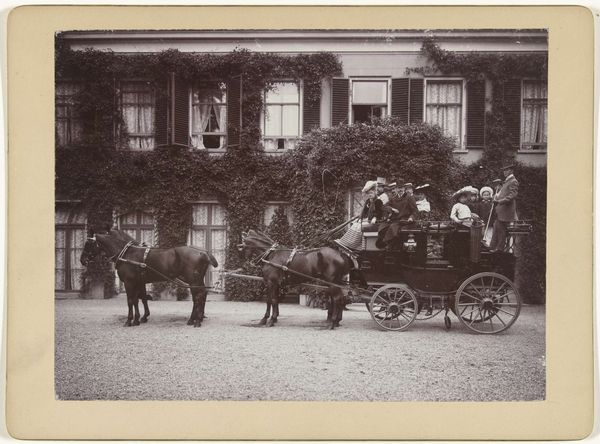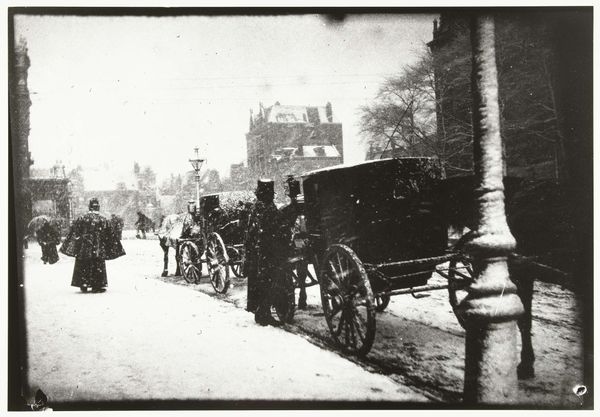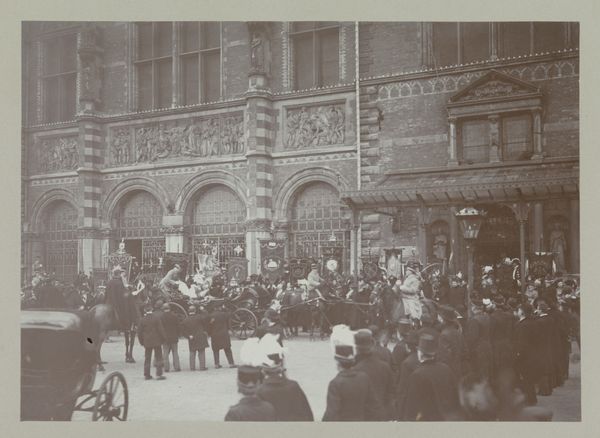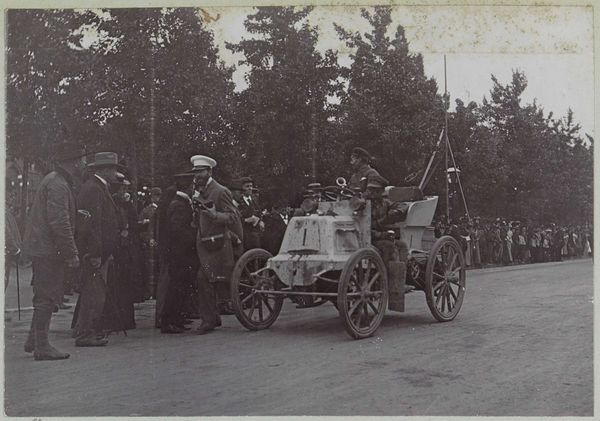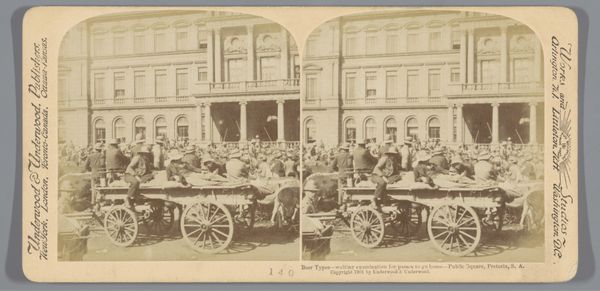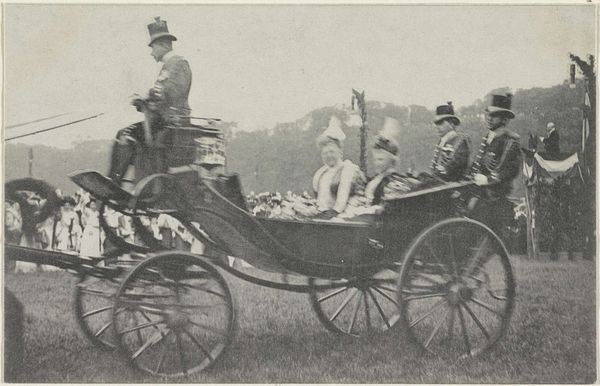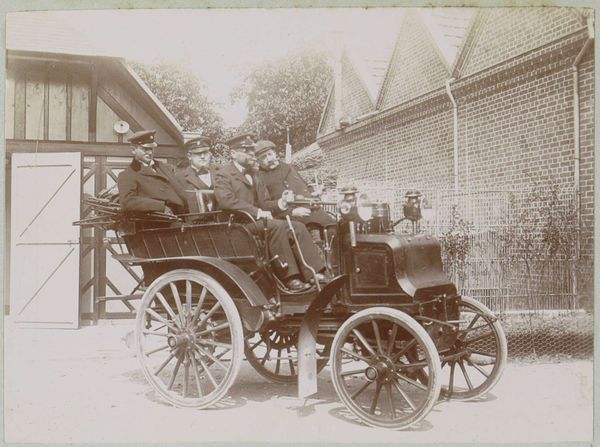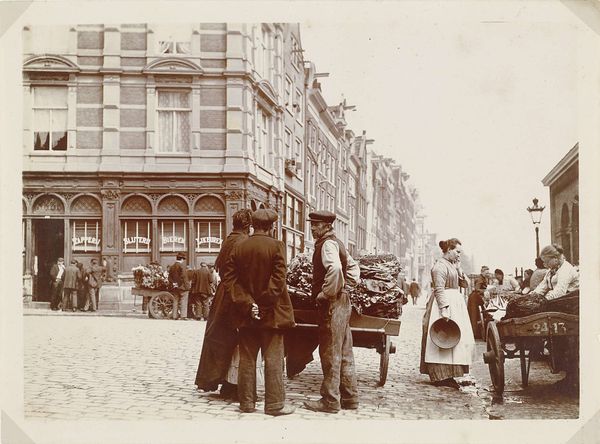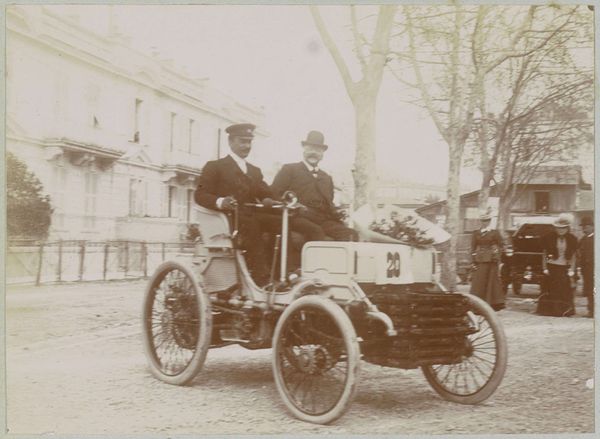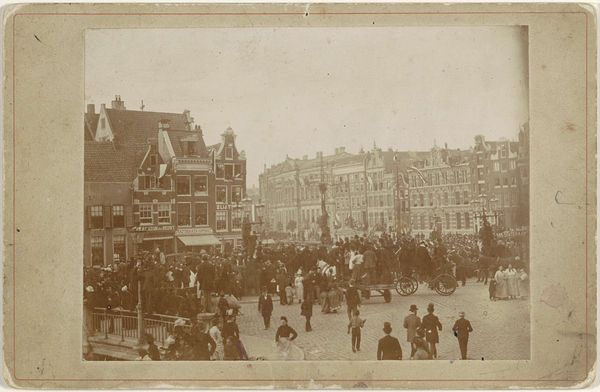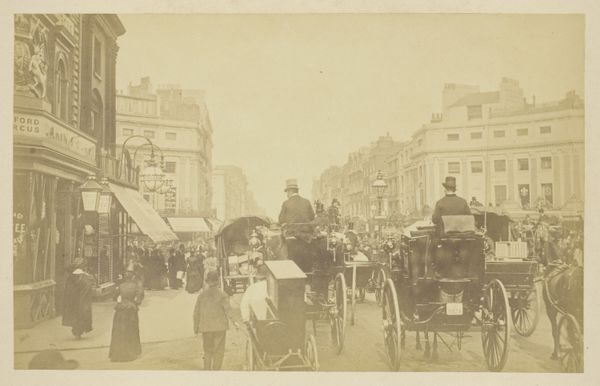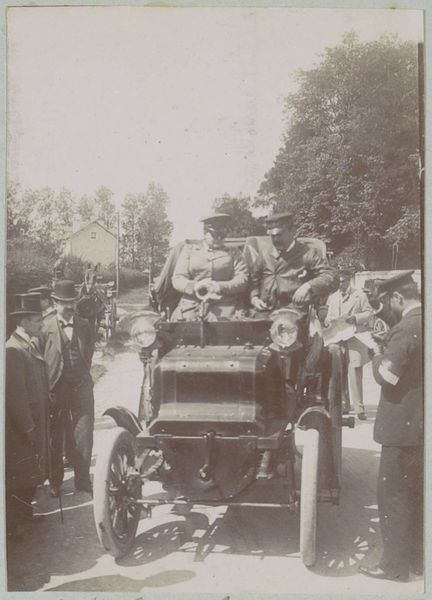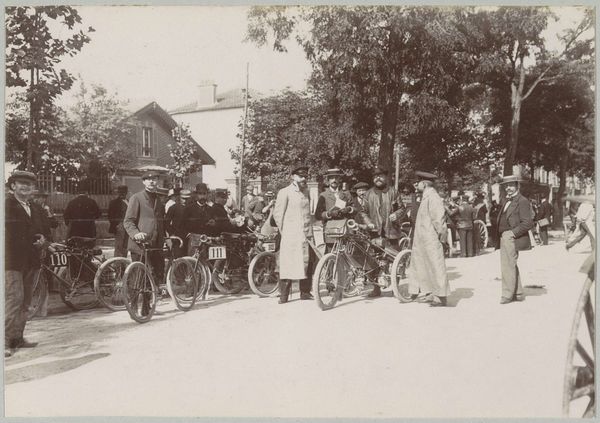
Autocoureur Prevost (Prevot), deelnemer aan de race Parijs-Amsterdam, in zijn automobiel (vermoedelijk) te Nijmegen 1898
0:00
0:00
gelatin-silver-print, photography, gelatin-silver-print
#
gelatin-silver-print
#
outdoor photograph
#
photography
#
gelatin-silver-print
#
cityscape
Dimensions: height 98 mm, width 146 mm
Copyright: Rijks Museum: Open Domain
Curator: Let's talk about this gelatin silver print, dating back to 1898. It's titled "Autocoureur Prevost (Prevot), deelnemer aan de race Parijs-Amsterdam, in zijn automobiel (vermoedelijk) te Nijmegen." It depicts, as you might guess, a race car driver, likely during a stop in Nijmegen during the Paris-Amsterdam race. Editor: Immediately, I'm struck by the textures. The crispness of the architectural details contrasted against the soft focus on the crowd. It gives you a real sense of being present. Curator: Exactly. The technology behind gelatin silver prints was still fairly new at the time, giving rise to photographers who wanted to show off the progress of technology. This photo not only documents that, but, situates that technology and this white male racer, within a nexus of societal expectations and early modern European social circles. The rows of onlookers tell a bigger story, as does the stately architecture in the background, serving to further demonstrate an elite context. Editor: You can also tell a story just by considering the construction of that automobile. All those spokes on the wheels! That's labor; skilled labor involving raw materials, craftsmanship... the image is as much about making as it is about speed. We often neglect the process involved in constructing these early vehicles. It speaks to an entire chain of production. Curator: Absolutely. We must recognize the socio-economic factors influencing these so called 'innovations'. Early car ownership was undeniably elitist, excluding most people. In order to produce images, access was granted to some and denied to others. Consider also the implications this photo may have held as a catalyst for white European modernity in an era of colonial expansion and rapid technological growth. Editor: It is interesting how photography's rise dovetailed with early industrial expansion. The image is quite small and precise, but it almost screams "look at this marvel of material progress, made by human hands!". One almost senses pride in the machinery of the day through it's visual framing within this social sphere. Curator: Indeed, though a careful read exposes deeper and more problematic power dynamics embedded in technology, gender and early modernization, which persist today. Editor: That is, certainly, the nature of critical analysis. Curator: Well put.
Comments
No comments
Be the first to comment and join the conversation on the ultimate creative platform.
